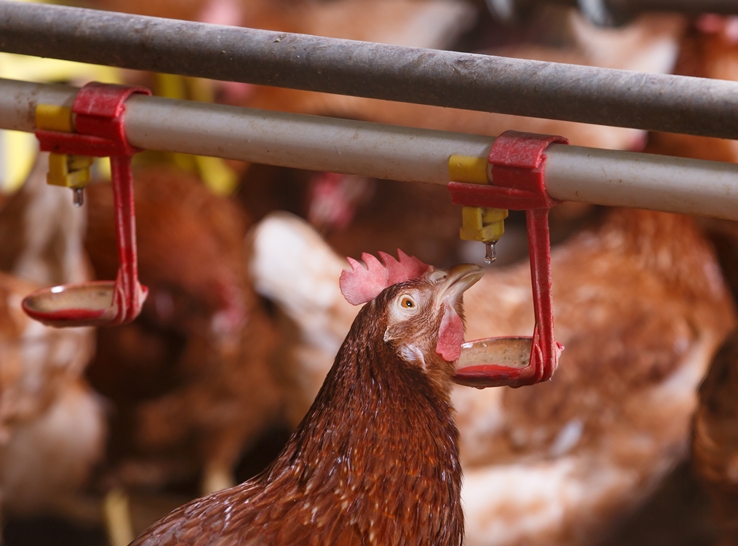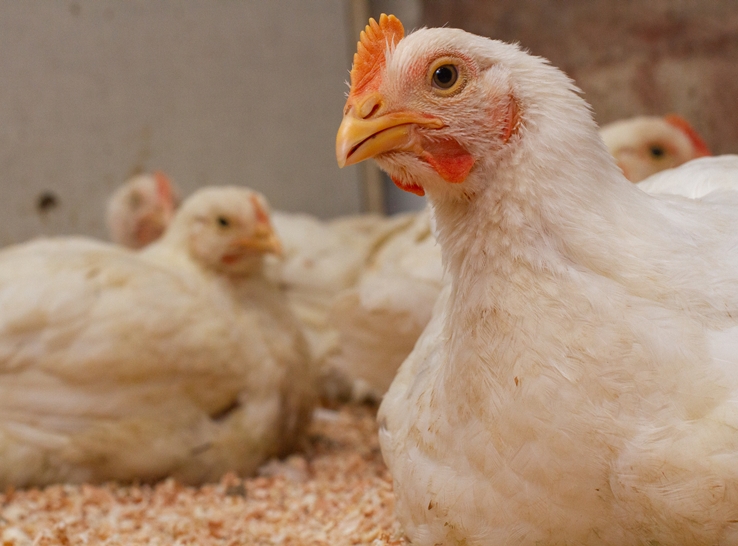Conducting in-lay boosting of adult, organic, free-range laying hens with a Pasteurella multocida vaccine protected against fowl cholera with minimal impacts on production, according to a study conducted by Luke Trimble, DVM, Wilson Vet Co.
The organic and free-range egg market is gaining traction among consumers. This is a welcome opportunity for poultry producers, but the antibiotic restrictions and free-range environment present challenges for egg producers.
Fowl cholera, caused by P. multocida, is one of the challenges, noted Trimble.
He pointed out that hens rely on immunity from vaccinations received as pullets. “With productive life spans that reach 80 weeks or more, immunity wanes, allowing for disease outbreak,” Trimble said. “Fowl cholera can result in severe decreases in livability as the flock ages, with mortality ranging from 1% to 5% weekly.”
Trimble studied in-lay boosting with a modified live vaccine for P. multocida to prevent fowl cholera in organic free-range layers. He presented his findings at the 2025 American Association of Avian Pathologists Annual Meeting.
Fowl cholera basics, prevention
“The clinical findings for fowl cholera include anorexia, depression, cyanosis and sudden death. Upon necropsy, splenomegaly, focal necrotic liver lesions, ovarian regression and peritonitis can be present,” Trimble noted.
He explained that disease transmission is horizontal and often caused by:
- Mammals – pigs, cats, raccoons and rabbits
- Cannibalism – hens eating dead infected hens
- Fomites – crates, equipment, feed and humans
- Shedding of bacteria by chronically infected birds
“Outbreaks are seen in mature birds, 55 to 60 plus weeks of age, and can lead to chronically infected birds until depopulation,” Trimble said.
Biosecurity, pest control, frequent collection of dead birds, cleaning and disinfection after depopulation and antimicrobial treatment, if permitted, all provide some measure of prevention and control. Vaccination strategies that utilize one live-inactivated commercial vaccine in conjunction with a siderophore receptor protein and an autogenous vaccine customized for serotype specificity at 8 and 12 weeks also provide good protection.
However, none of these strategies adequately addresses the disease in areas where it has historically been present.
Trimble explained that the layer industry boosts vaccines for E. coli and infectious bronchitis, but rarely for other diseases.
Study design
Trimble designed field trials that explored the impact of an additional fowl cholera vaccine for adult, organic, free-range laying hens. “Because of economic and welfare considerations, water delivery for boosting vaccinations is the only viable option,” Trimble said, “but this is an extra label use due to the delivery.”
Field trial results
He compared results from boosting the vaccination at historical P. multocida sites before and after a cholera outbreak in four houses located in two different geographical regions. All vaccinations were identical, a stabilizer was used and a trained technician handled and administered the vaccine.
In house A, mortality started at 62 weeks of age, P. multocida was confirmed at 71 weeks of age, and the vaccination was administered at 75 weeks of age. No mortality spikes or production losses were noted after the vaccine booster.
In house B, located on the same site as house A, a similar scenario played out. Mortality began to rise at 55 weeks, P. multocida was confirmed at 66 weeks of age and boosting occurred at 70 weeks of age. Mortality leveled off one week after vaccination with no subsequent elevation or loss in production.
House C was in a different geographical region. Boosting after an outbreak of P. multocida garnered very similar results here, too. Elevated mortality was observed at 62 weeks, P. multocida was confirmed at 67 weeks of age and the vaccine was administered at 71 weeks of age.
House D was in a similar region to house C, but hens received the vaccine before an outbreak occurred. “Hens were boosted at 60 weeks of age. As of this presentation, House D remains unaffected by P. multocida, despite historical challenges with this bacterium,” Trimble said.
“Overall, in-lay boosting with a commercial P. multocida-1 vaccine didn’t cause adverse mortality or production losses,” he noted.
Trimble identified several challenges during the study, including:
- Availability of commercial multocida ELISA antibody test kits
- Producers’ hesitation to incur additional costs unless a threat is seen
- Human factors, such as handling and administration, that can impact vaccine viability
His research demonstrated that in-lay boosting provides a “viable cholera prevention strategy for specialty agriculture markets that have limited treatment options because of antibiotic-free or organic labels.”




